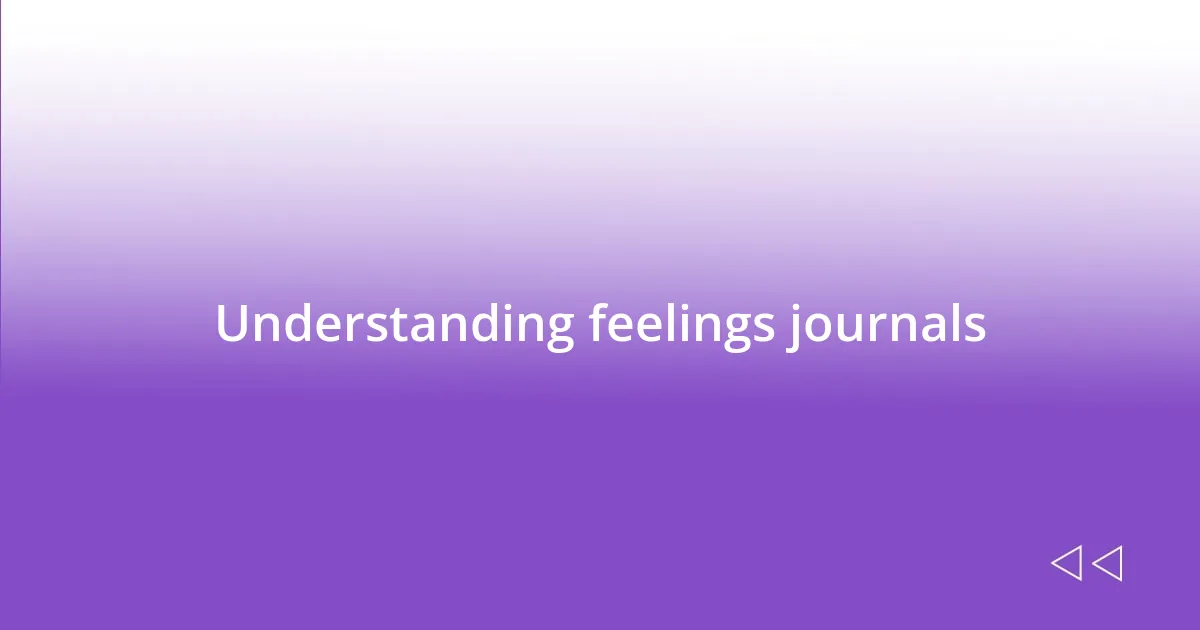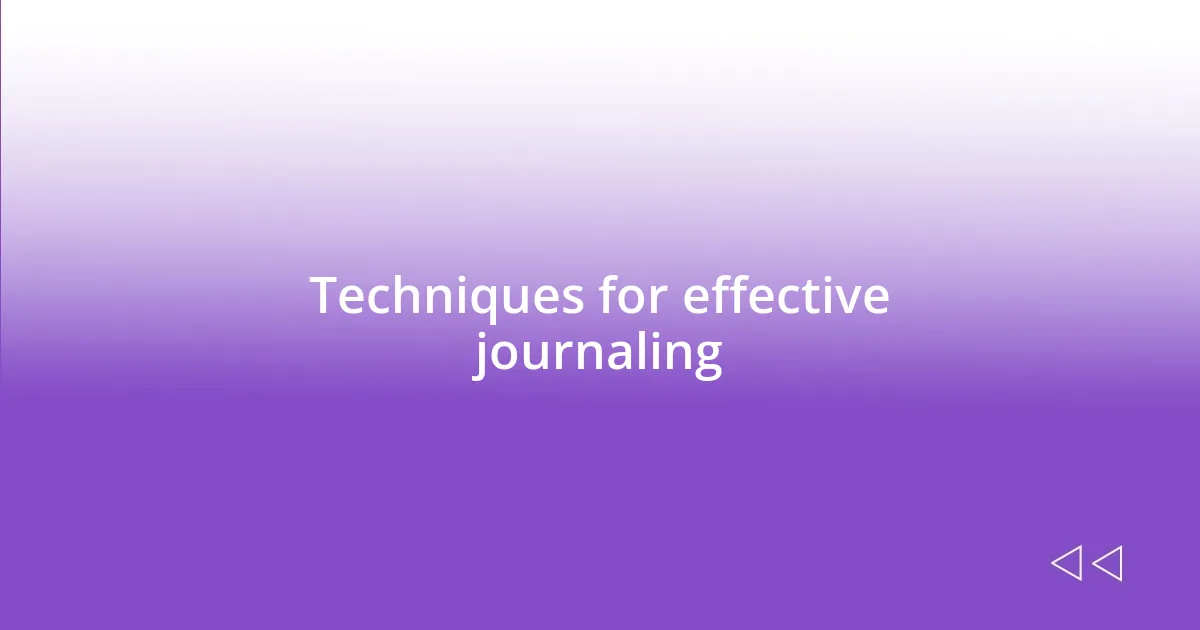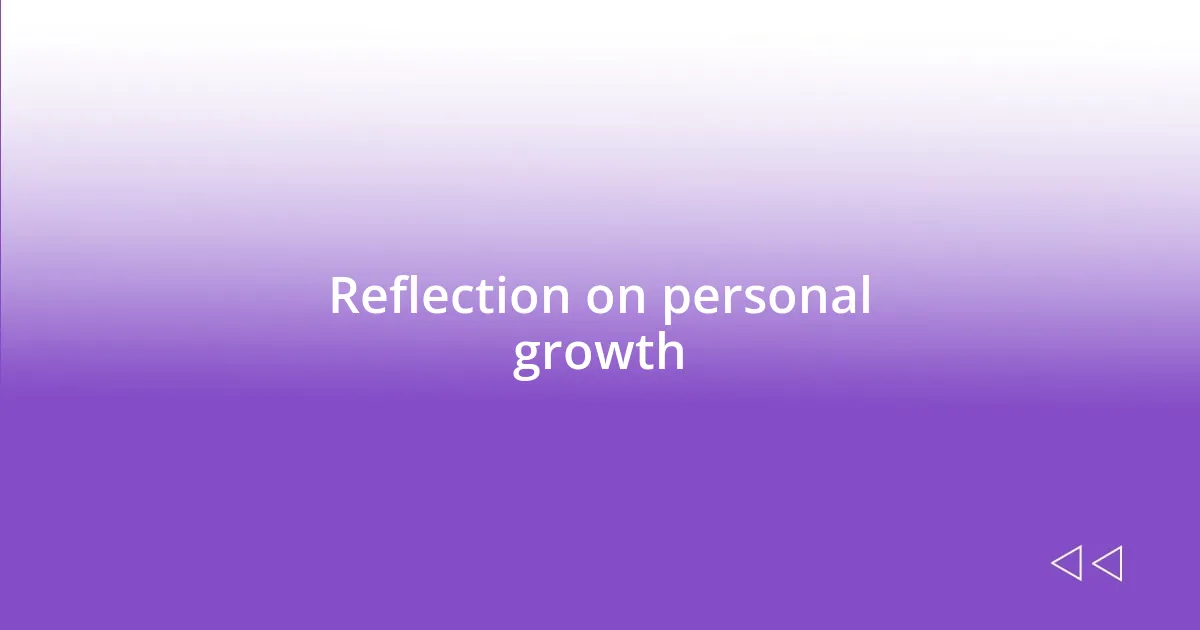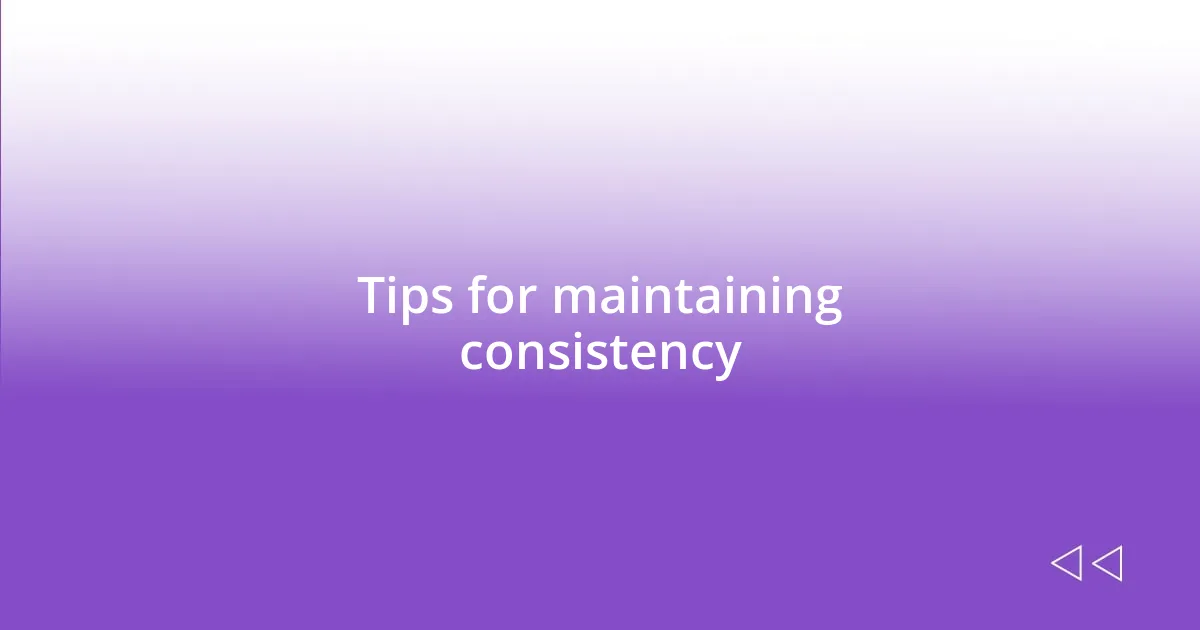Key takeaways:
- Feelings journals serve as a sanctuary for emotions, offering clarity and insights through the act of writing.
- Effective journaling techniques include dedicating specific time, using prompts, and embracing honesty in expressing emotions.
- Identifying and naming emotions can empower individuals to better understand and control their feelings.
- Consistent journaling fosters personal growth by reflecting on past experiences and celebrating progress.

Understanding feelings journals
Feelings journals are more than just notebooks; they’re a sanctuary for our emotions. I remember the first time I sat down to pour my heart out onto the pages. It felt like a weight lifted from my chest, allowing me to explore thoughts that had been swirling in my mind without a clear shape or form. Have you ever felt that rush of clarity after writing down your feelings?
As I began to document my daily ups and downs, I noticed patterns emerging. For instance, I realized how often stress triggered feelings of sadness. This revelation made me question how I respond to stressful situations. What if I had known sooner the impact of those moments on my overall mood?
One of the most powerful aspects of keeping a feelings journal is the opportunity for reflection. I often revisit my entries and discover insights that surprise me. It’s like having a conversation with my past self. Have you ever looked back on a past experience and felt a wave of understanding washing over you? That’s exactly how I feel when I reread my writings—each entry holding a piece of my emotional logic that helps me grow.

Techniques for effective journaling
One effective technique I’ve adopted is setting aside dedicated time for journaling. Initially, I tried to fit it into my busy schedule, but I soon found that it felt rushed and less meaningful. Now, I treat my journaling time like an appointment with myself—usually at the end of the day. This intentionality allows me to reflect without distractions, diving deeper into my emotions. Have you noticed how much more you can uncover when you’re not in a hurry?
Another technique I’ve found invaluable is using prompts to guide my writing. Sometimes, I feel stuck or unsure about what to write, and that’s when a little nudge helps. I keep a list of prompts handy. For instance, one evening, I wrote about the happiest moment of my week, and it brought back such vivid memories that I felt like I was reliving that joy all over again. It’s amazing how targeted questions can open up a world of thoughts and feelings!
Finally, I’ve learned the significance of being honest and raw in my entries. There was a time when I hesitated to express negative feelings out of fear of vulnerability. But I discovered that embracing all my emotions, even the uncomfortable ones, has led to profound growth. By being authentic in my emotions, I not only understand myself better but also feel a sense of liberation. Do you ever find it hard to express your true feelings? Trust me, letting it all flow onto the pages can be incredibly freeing.
| Technique | Description |
|---|---|
| Dedicated Time | Set specific moments for journaling to ensure meaningful reflection. |
| Use of Prompts | Incorporate guided questions to unlock deeper thoughts and feelings. |
| Honesty and Authenticity | Express all emotions—positive and negative—for true personal growth. |

What I learned about emotions
As I delved deeper into my feelings journal, I discovered that emotions are far more complex than they initially seem. Each entry I wrote was a miniature exploration of my psyche. I vividly remember one afternoon when I was reflecting on a particularly tough week filled with anxiety. Writing about it felt like untangling a knot of feelings; once I named my emotions on paper, they began to lose their hold over me. It was liberating to recognize that articulating my feelings could diminish their power, turning chaos into clarity.
In my journey, I learned that emotions serve as important messengers. They tell me what’s needed for my well-being and guide my decisions. Here are some key insights I gathered:
- Emotions aren’t inherently “bad.” Negative feelings often indicate unmet needs or boundaries needing to be reassessed.
- Emotions are temporary. Just like weather changes, emotions will shift. This realization helped me avoid spiraling when I experienced moments of sadness or anxiety.
- Naming emotions provides power. Identifying what I feel in the moment—like frustration or joy—brings a sense of control and understanding to my experiences.
These insights helped me embody a more proactive approach to my feelings, and I hope they resonate with you too.

Reflection on personal growth
Reflecting on my growth through journaling has truly been eye-opening. I remember one evening, under dim lighting, I stumbled upon an entry that highlighted a difficult decision I made months ago. It’s interesting how revisiting these moments allows me to see how far I’ve come. I often find myself asking, “What would I tell my past self?” That question opens up a dialogue within me where I realize the strength and wisdom I have gained along this journey.
As I continued to write, I noticed a shift in my mindset. Early on, my entries were filled with self-doubt and frustration. But gradually, I found myself celebrating small victories and acknowledging my growth. One particular entry stands out, where I wrote about overcoming a minor challenge at work. I felt invigorated when I re-read it, realizing that these reflections act as markers for my progress. Don’t you think it’s powerful to have tangible reminders of how we’ve evolved?
Over time, I’ve come to appreciate self-reflection as a crucial tool for personal development. The act of journaling has not only helped me recognize my emotional triggers but also encouraged me to set goals for the future. I recall a moment when I penned thoughts about pursuing a new hobby, which I once hesitated to try. Looking back now, that decision has enriched my life in unexpected ways. How often do we overlook opportunities for growth simply because we’re afraid to step outside our comfort zone? It’s a lesson I hold dear: growth often lies just beyond our fears.

Tips for maintaining consistency
To maintain consistency in your feelings journal, setting a specific time each day to write can be incredibly effective. I’ve found that morning or evening rituals work best for me. There were times I didn’t write unless I felt overwhelming emotions, but now, I make journaling a habitual part of my routine. Have you noticed how routines can anchor us, creating a sense of stability?
Another tip is to keep your journal accessible. I remember one phase when I tucked my journal away on a bookshelf, and suddenly, it felt like a chore to retrieve it. Instead, I now keep it beside my bed or in my bag. That little change encourages me to jot down my thoughts whenever they arise. What do you think? Would having your journal within reach make you more likely to write?
Finally, I encourage the use of prompts or questions to spark your writing. When I struggled with knowing where to start, I found that asking myself, “What made me smile today?” opened up a floodgate of memories and feelings. Simple inquiries can lead to profound insights. It’s fascinating how a few guiding questions can ignite creativity and clarity in our journaling practice, don’t you think?












